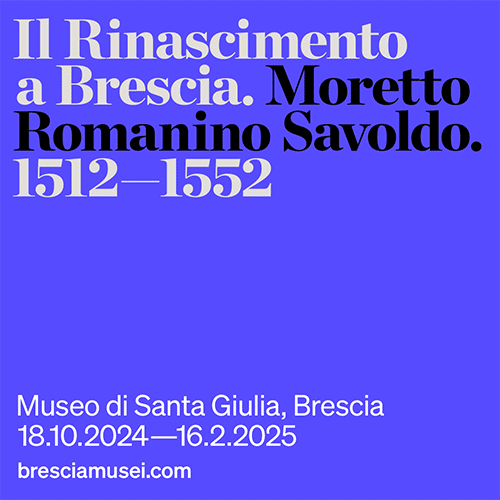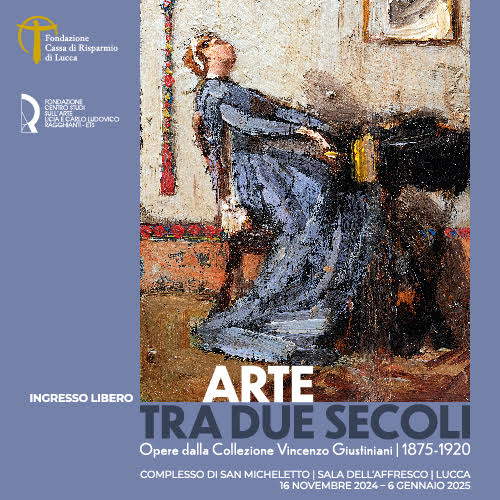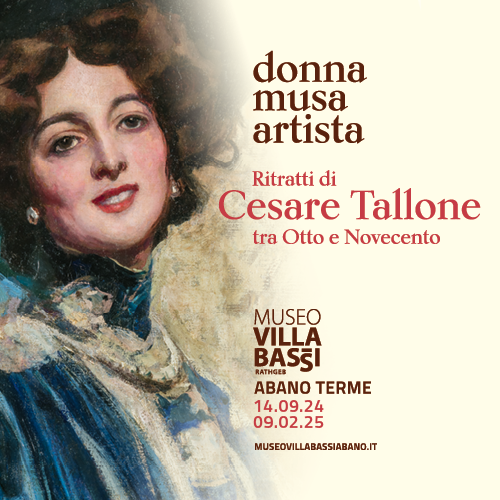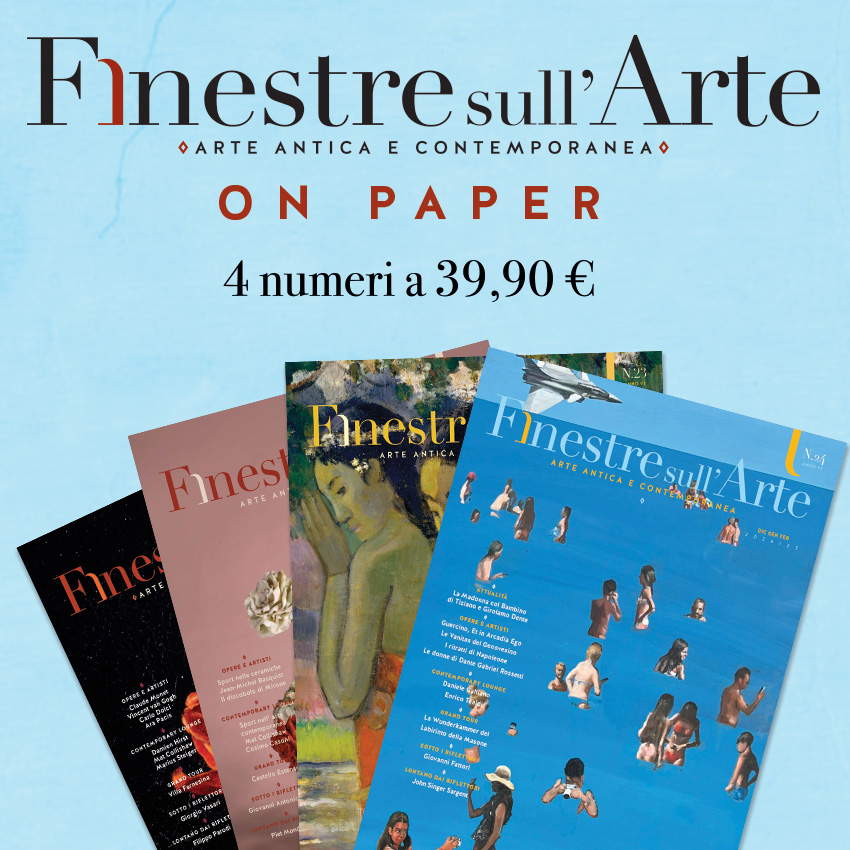The Parisian Mantegna. The works of the Musée Jacquemart-André
Contrary to what one might believe, the practice of block exchanges of artworks between international museums is not a recent custom. If anything, it is of recent times the custom to give birth to reciprocal loans that feed totally useless exhibitions on either side, and it is often enough that at the center remain, ça va sans dire, the big names, the artists capable more than others of exerting a magnetic appeal on the public. Take the example of Caravaggio: last year, as part of an agreement between the Galleria Borghese and a well-known fashion maison, some Caravaggio paintings left for Los Angeles, and California reciprocated with a bust of Bernini included in the exhibition on the Baroque genius mounted by the Roman museum. If the Caravaggios in the Galleria Borghese had remained in Rome and the Bernini bust in Los Angeles, probably no one would have noticed, since the California exhibition was not based on relevant scientific assumptions and the presence of the Los Angeles sculpture in Rome did not have a decisive weight in the overall economy of the Bernini monograph. Instead, a different picture emerged in 1982, when the Metropolitan in New York signed a protocol with the Italian Ministry of Cultural Heritage: three years later, works by Caravaggio left for the U.S. to animate a major exhibition dedicated to the Lombard genius(The Age of Caravaggio, then brought, a few months later, to Naples), while Italy, in 1983, thanks to the same collaboration agreement had been able to organize, at Palazzo Venezia, an exhibition of a fundamental nucleus of thirty-eight works by Jackson Pollock that Lee Krasner had donated to the Metropolitan the year before. This year, however, two works by Caravaggio are leaving Palazzo Barberini bound for Paris for the exhibition Caravage à Rome at the Musée Jacquemart-André and, in return, the National Gallery of Ancient Art is getting six works, including two byAndrea Mantegna (Isola di Carturo, 1431 - Mantua, 1506), with which it has constructed a small exhibition entitled La stanza di Mantegna. Masterpieces from the Jacquemart-André Museum in Paris, curated by Michele Di Monte.
It should be emphasized that this is an exhibition that adds nothing to our knowledge of Mantegna, but the direction of Palazzo Barberini has nevertheless acted shrewdly, giving Di Monte the opportunity to devise an exhibition of non-trivial popular value. For two substantial reasons, one involving the history of art and the other the history of collecting. The fact that an exhibition on Mantegna is being organized in Rome finds its raison d’être in the fact that the great Venetian artist worked, between 1488 and 1490, in Rome, called by the then pontiff Innocent VIII to attend to the realization of the frescoes in the chapel of San Giovanni in the Palazzo del Belvedere, as Vasari also informs us in his Lives (“He came into such fame, that Pope Innocent VIII, hearing of his excellence in painting and the other good qualities with which he was marvelously endowed, sent for him, so that he, being finished fabricating the wall of Belvedere, so as he had many others do, might adorn it with his paintings. He went therefore to Rome with much being favored and recommended by the marquis, who in order to further honor him made him a knight, and was lovingly received by that pontiff and immediately given to him to make a little chapel, which is in said place. Which with diligence and with love he worked so minutely, that both the vault and the walls seem more like an illuminated thing than a painting; and the greatest figures that are there are above the altar, which he made in fresco like the others, and they are St. John baptizing Christ, and around them are peoples undressing who make a sign of wanting to be baptized.”) Vasari also writes that Mantegna produced other works in Rome: today, however, nothing remains of his Roman production, and although the two works in the Musée Jacquemart-André are chronologically distant from the period he spent in the then capital of the Papal States (one too early, the other too late), the exhibition makes an artist who worked in the city and who had a strong passion for Roman antiquities available in Rome for a few months.
Again, the exhibition intends to take us into the private rooms (hence the title) of the two collectors who bought the works exhibited at Palazzo Barberini, Édouard André (Paris, 1833 - 1894) and his wife Nélie Jacquemart (Paris, 1841 - 1912) thus offering us, with merit, an interesting piece of late 19th century collecting, letting us step within the taste of the time. And in accordance with the fashions of the time, Édouard and Nélie also nurtured a deep passion for Italian art, especially medieval and Renaissance art. A passion so deep that it led them to set up a floor of their Parisian residence as a true musée italien organized according to thematic halls (or... rooms). And in those rooms, Michele Di Monte wrote in a pamphlet distributed free of charge at the exhibition (there is no catalog), not only objects and works of art were collected, but also took shape “a desire for appropriation, which is all the stronger the more elusive its object, the more that object is a phantom that passion, the passion of the amateur, paradoxically, can contemplate only at a distance.” The unattainable desire is the will to bring the past back to life. A desire common to both nineteenth-century collectors and Renaissance artists: and since reviving the past “without transforming it [...] into something other than what it was” is an impossible feat, one ends up exhibiting it. What animates Andrea Mantegna’s art is therefore a “romantic archaeologism” (Antonio Paolucci), and Mantegna is a profoundly visionary artist who looks at the past with the spirit of an archaeologist, but who also knows how to be a “modern classic” (Giovanni Agosti), and the highest pinnacles of his modernity are to be found in his attitude toward the image which, Di Monte points out, “always questions his contemporaries” and urges artists toward, precisely, modern answers. Hence, the originality of his spatial research, the invention of iconographies never dared by others before, the tension toward a direct involvement of the concerning.
 |
| Images from the exhibition The Mantegna Room. Ph. Credit Finestre Sull’Arte |
 |
| Images from the exhibition La stanza di Mantegna. Ph. Credit Finestre Sull’Arte |
 |
| Images from the exhibition The Mantegna Room. Ph. Credit Finestre Sull’Arte |
It is in this sense that it is necessary to readEcce Homo, toward which the visitor necessarily makes his or her way as soon as he or she crosses the entrance to the exhibition (which occupies a single room). Of the profoundly innovative character of this painting, “one of the most sublime and personal masterpieces of the last phase of Mantegna’s career” (Keith Christiansen), one becomes aware even just by observing the rope around Christ’s neck, which equals the inventions of Antonello da Mess ina (Messina, 1430 - 1479) and adds suffering to suffering, but the Venetian artist goes further, totally eliminating the figure of Pontius Pilate from the painting. Jesus is accompanied only by two thugs whose grizzled ugliness is an allegory of the corruption of their souls (an expedient typical of northern European painting of the time), and who are shaped by Mantegna’s harsh, cutting sign, which tends not to admit of argument but which here, given the late chronology of the work (Christiansen has proposed a date, now widely accepted, around 1500), might suggest that the painter was familiar with the physiognomic studies of Leonardo da Vinci (Vinci, 1452 - Amboise, 1519). The torturer on the left is a sort of small manifesto of Andrea Mantegna’s antiquarian culture: his is a verisimilar but not exact past (and that was basically what Berenson reproached him for: to have given life to a Rome of his dreams and not a philological Rome, and perhaps this is also why his encounter with the real Rome in the late fifteenth century left the artist disappointed), and it is exemplified by the bizarre inscriptions on the torturer’s turban, which are not written in a known language but imitate Hebrew. Even less identifiable is the text that appears to be covered by Jesus’ halo (on the head of the figure in the background: there are a total of four people accompanying Jesus, but two are barely visible), while easy to read are the two cartouches on either side, which bear the phrase “Crucifige eum, tolle eum, crucifige cruc.” (“Crucify him, take him, crucify him!”) inserted in cartoon-like fashion to evoke the cries of the crowd. The viewer’s involvement in the work thus becomes total and synaesthetic: the strong visual impression of the half-bust presented to him, almost as if the viewer himself had to judge, taking the place of Pilate who is absent from the scene, is combined with the auditory suggestion exerted by those two scrolls placed at the corners of the painting.
And it is precisely the absence of Pilate, for Di Monte, that is the most disturbing element of the work. "theEcce Homo [...] does not, in fact, represent Pilate presenting Christ to the people, but rather, on the contrary, the people presenting Christ to Pilate. And Pilate, rightly, is not there, because he ’is’ on our side of the picture. The ancient Roman judge, with power of life and death, is us, in front of the picture. Everyone must face their own demons, in their own rooms or, as Dante would have better put it, in the ’most secret chamber of the heart.’" The demand for judgment is indeed urgent, pressing and inevitable (and everything contributes to making it so: the suffocating absence of voids in which to take refuge by looking away, the pain of a Christ whose body still shows the marks of the whipping he received a short time before, the open mouths of the shady characters who accompany him), but Jesus’ destiny appears inescapable, given that drops of blood already stain the scrolls (and it is perhaps in that blood that, if anything, Pilate’s presence is manifested).
The comparison on the back wall is completed with a work datable to about forty years earlier (i.e., about 1455): this is the Madonna and Child with Saints Jerome and Louis of Toulouse, which since 1814 has been in the collections of a Brescian general, Teodoro Lechi, in a note of which it is described as follows: “the Virgin shows herself afflicted, thinking perhaps of the future sufferings of the divine Son whom she holds close to her breast: he is standing over a small table and weeping. On the right St. Jerome dressed as a cardinal. On the left a holy bishop dressed as a monk and his shoulders slightly turned. The faces of both are melancholy. Above festoon of fruit and flowers, and horizon in the distance.” Ended up in the possession of the merchant Michelangelo Guggenheim, the panel was later sold in 1887 to Édouard André and Nélie Jacquemart (thus preceding by four years the purchase ofEcce homo, dated 1891). Together with another Madonna and Child with Saints, made in the 1990s and not shown in the Roman exhibition, the Madonna of c. 1455 completes the nucleus of Mantegna autographs in the Jacquemart-André collection, which was particularly prized by those who frequented their Paris residence. As for the painting, which in the past has been the subject of complex attributional vicissitudes (Longhi, for example, wanted it made in collaboration with Bellini), there are several elements that have led to its placement in Mantegna’s Paduan years: the cushion resting on the balustrade and the position of the Child with the sad look (marble balustrade and pillow are in fact an allegory of the sarcophagus that will welcome him after the crucifixion: That is also why the mother is sad) let us understand that a taste for a foreshortened view from below predominates here, while the festoon of clear Squarcionesque taste and the fact that two scholarly saints were in tune with the Paduan cultural milieu, animated by its university, are other elements that would not leave major doubts about the period of realization. Already precocious, however, is the tendency to want to involve the viewer: the balustrade creates a barrier that is nevertheless broken by the cushion that protrudes toward us and by the flap of Saint Ludovico’s vestments that invade our space, as if to make us participants in the scene.
 |
| Andrea Mantegna, Ecce Homo (c. 1500; tempera on canvas mounted on panel, 54.7 x 43.5 cm; Paris, Musée Jacquemart-André) |
 |
| Andrea Mantegna, Madonna and Child with Saints Jerome and Louis of Toulouse (c. 1455; tempera on panel, 69 x 44 cm; Paris, Musée Jacquemart-André) |
The exhibition, as anticipated, is completed with four works. The first we come across is a small bronze byAndrea Briosco known as Il Riccio (Trent, c. 1470-Padua, 1532) depicting a Moses that suggests that, in the Padua of 1513 (the work was in fact executed that year for the monastery of Santa Giustina in the Venetian city: it was to decorate a fountain), the tendency to want to merge the needs of the Christian religion with pagan instances was far from dormant, since the Moses is presented to us with the two classical horns, an iconographic attribute of the biblical prophet by mistake (it is well known that St. Jerome, in his Vulgate, in relation to the face of Moses after the encounter with God, had translated with the adjective “horned,” instead of the correct “radiant,” the Hebrew karan, confusing it with the term keren, which actually stands for “horned”), but they are transformed, as critics have long since noted, into the ram’s horns symbolizing Amun (or Ammon), a deity of ancient Egypt whose most recognizable attribute was, precisely, a pair of long ram’s horns. The depiction has specific reasons: in Rome, Amun was worshipped as Jupiter Ammon, and mythography reports an episode of him turning into a ram to come to the rescue of a Bacchus who was burning with thirst in the desert, managing to guide him out of the inhospitable environment (the same as Moses did with the Hebrew people). Next to the Hedgehog statue appears, in a most unfortunate position since visitors are forced by the security cordon to remain at too great a distance to appreciate it, a drawing of the Mantegna school: a Hercules and Antaeus, a variant of one of the Venetian artist’s most replicated subjects (indeed, it was “a subject that had been dear to him since the early 1960s,” Giovanni Agosti specified) since it was one of the most suitable for studying the nude in motion and in difficult poses, such as the one presented in this sheet, which shows us a Hercules clutching forcibly, in a moreover uncomfortable grip, the unfortunate rival whose struggling is at once emphasized and made more dynamic by the moving hair and the rising drapery.
On the opposite wall, a gentle Madonna and Child by Cima da Con egliano (Conegliano, 1459/1460 - 1517/1518) and a Portrait of a Man by Giorgio Schiavone (real name Juraj Ćulinović, Scardona, 1433/1436 - Å ibenik, 1504) close the exhibition. Cima’s Madonna, modeled on Bellini’s examples, is indicative of the relationships that existed between Bellini himself and Andrea Mantegna (the two were brothers-in-law, and their artistic and personal ties are explored for the first time in an exhibition at the National Gallery in London at the turn of 2018-2019): the panel, wrote Giovanni Carlo Federico Villa, expresses “an overall monumentality accompanied by the simplicity of the drapery and still certain structural naiveté, unresolved the foreshortening of the Child’s legs, which are excessively awkward and swollen” (this is, it is worth noting, a youthful work by the Venetian artist, executed when Cima was in his early 30s). Finally, the portrait of the Croatian Ćulinović is intended to evoke the humanistic milieu of late 15th-century Padua: Already exhibited in the Paduan section of the great Mantegna exhibition of 2006 (which was held in Mantua, Padua, and Verona), Schiavone’s virile portrait on parchment, characterized by an extremely intense naturalism and an almost plastic relief (just look at the details of the eyes and the ear, which seem almost to emerge from the parchment support), it perpetuates a tradition (that, precisely, of the portrait on parchment) that goes back to the Middle Ages and that was intended to cloak the effigy of the portrayed person in deep symbolic references, since parchment was for a long time the princely support for writing, but we have no certain information about the use for which this work was intended. That is, we do not know whether it was a portrait strictu sensu, or a sheet inserted in a codex.
 |
| Andrea Briosco called the Hedgehog, Moses (1513; bronze, 49.8 x 21 cm; Paris, Musée Jacquemart-André). Ph. Credit Studio Sébert Photographes |
 |
| Mantegnesque School, Hercules and Antheus (16th century; ink on paper, 29.4 x 18 cm; Paris, Musée Jacquemart-André). Ph. Credit Studio Sébert Photographes |
 |
| Giovanni Battista Cima da Conegliano, Madonna and Child (1490-1492; oil on panel, 44 x 33 cm; Paris, Musée Jacquemart-André). Ph. Credit Studio Sébert Photographes |
 |
| Giorgio Schiavone, Portrait of a Man (c. 1460; tempera on parchment mounted on panel, 37.7 x 29.8 cm; Paris, Musée Jacquemart-André). Ph. Credit Studio Sébert Photographes |
A character that does not emerge from the exhibition, but which it is nonetheless important to emphasize, is that the acquisitions of Édouard André and Nélie Jacquemart were a consequence of the rediscovery of Mantegna that thrilled collectors in France in the second half of the 19th century. The Mantegna nucleus is thus one of the oldest in their collection, and it began to form as early as when the two were newlyweds: the purchase of the Madonna and Child not present in the exhibition dates back to 1881, the year in which, on June 30, the marriage was celebrated, and within five years the couple had secured three precious antique copies of as many scenes frescoed by the Venetian genius in the church of the Eremitani in Padua, and, as mentioned above, the purchase of the Madonna and Child with Saints Jerome and Ludwig of Toulouse dates back to 1887. It thus took ten years (theEcce Homo, as mentioned above, reached the collection in 1891) to complete the Mantegna portion, which on the date of the opening to the public of the Jacquemart-André’s musée italien in 1913 following Nélie’s death, won wide critical acclaim, in a climate of heated revival, since just three years earlier the Louvre had acquired the celebrated Saint Sebastian.
The museum’s importance resonates in the words that critic Georges Lafenestre used, in a full-bodied article published in the Gazette des Beaux-Arts in the aftermath of the opening of Nélie and Édouard’s Musée, to describe the collection: “by the number, variety, and quality of the objects of which [the museum] is composed, it is, since the time of the donation of the Château de Chantilly and the Musée Condé through the Duke of Aumale, the most magnificent bequest of works of art that enlightened patriotism has been able to make to our country for the delight and instruction of all those who love, study, practice or protect the arts.” And Lafenestre himself did not fail to extol, in his writing, the section of the museum devoted to Mantegna, to whom no less than three pages were dedicated, opening in particularly emphatic tones: "but here we are before the true master of northern Italy, the mighty Andrea Mantegna. Three works, two Madonnas and an Ecce Homo, in an unparalleled state of preservation and value, bear here his characteristics: an energetic realism, at times ruthless, brutal, almost pedantic, but always justified and ennobled by a truly ancient intelligence of human beauty in its animated forms and, in addition, by a sensitivity of observation more touching than one would expect, since he admires and analyzes, with a visible and participating delicacy, the spontaneous gestures and physiognomies of women and children."
Warning: the translation into English of the original Italian article was created using automatic tools. We undertake to review all articles, but we do not guarantee the total absence of inaccuracies in the translation due to the program. You can find the original by clicking on the ITA button. If you find any mistake,please contact us.






























